Eboracum / Jorvik

Historic cathedral city, once capital of Roman Britannia, and subsequently British Viking territory

York is another of England‘s many historic and quaint towns, with a walled city centre and one of the most impressive cathedrals in the country. It was founded during Roman times, but was also settled by the Vikings during the 9th and 10th centuries, who called it Jorvik. Today it is a popular tourist destination, with a thriving nightlife.
I’ve been to York quite a number of times, most recently visiting family there. Much of the north of England can seem industrial and forbidding, but I find York to be an oasis of chocolate-box escapism in amongst it all.
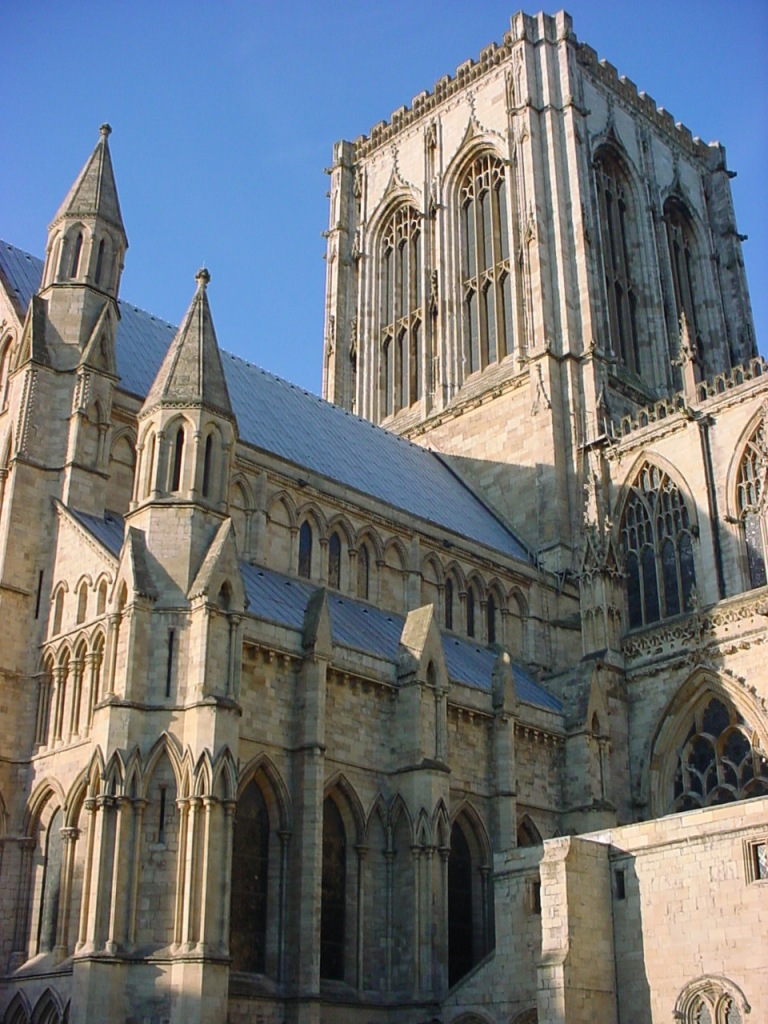
In the centre of the old walled city is York Minster, the second largest cathedral in England after St Paul’s in London. In its current form, construction started in the 12th century and continued for the best part of 300 years. You can climb right to the roof of the central tower for great views far beyond the edge of the city.
Inside York Minster, and a view up inside the central tower.


York has probably the most complete ancient city walls of anywhere in the UK, they completely encircle the old town in a loop of around three miles. It’s possible to walk the perimeter. Other walls I have visited include those in Xi’an, China.
Monk Bar on Monkgate is one of the four elaborate gatehouses to the old city. This gate was built in the 14th century.


Chrismas shopping in York, with the Minster visible in the background.
An old half timbered building on Pavement, now occupied by a shoe shop. This reminds me of the High Bridge Cafe in Lincoln.
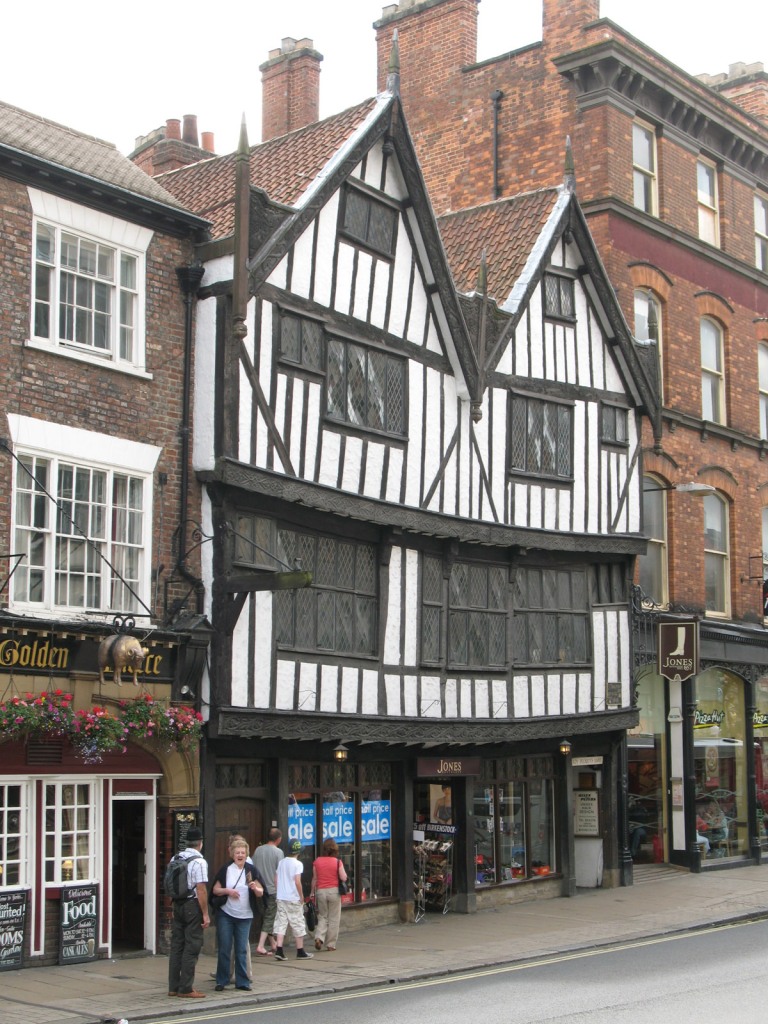

Summer ice cream for sale in a square in the old city, I think this is Colliergate.
Typical York street view on Goodramgate.
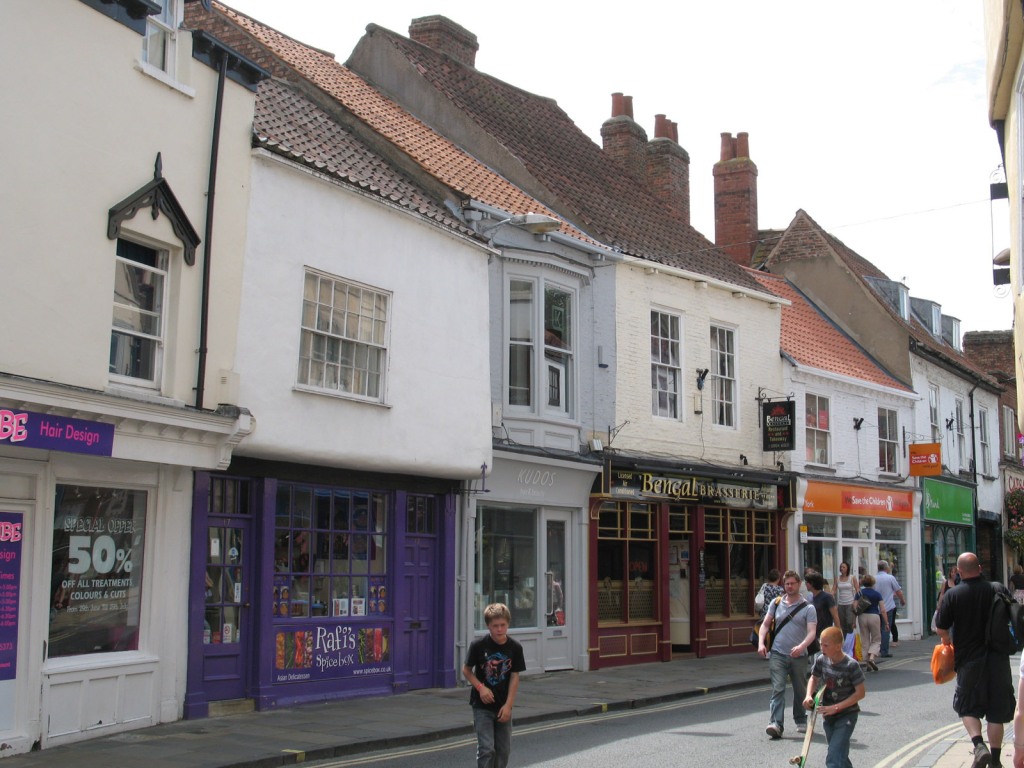
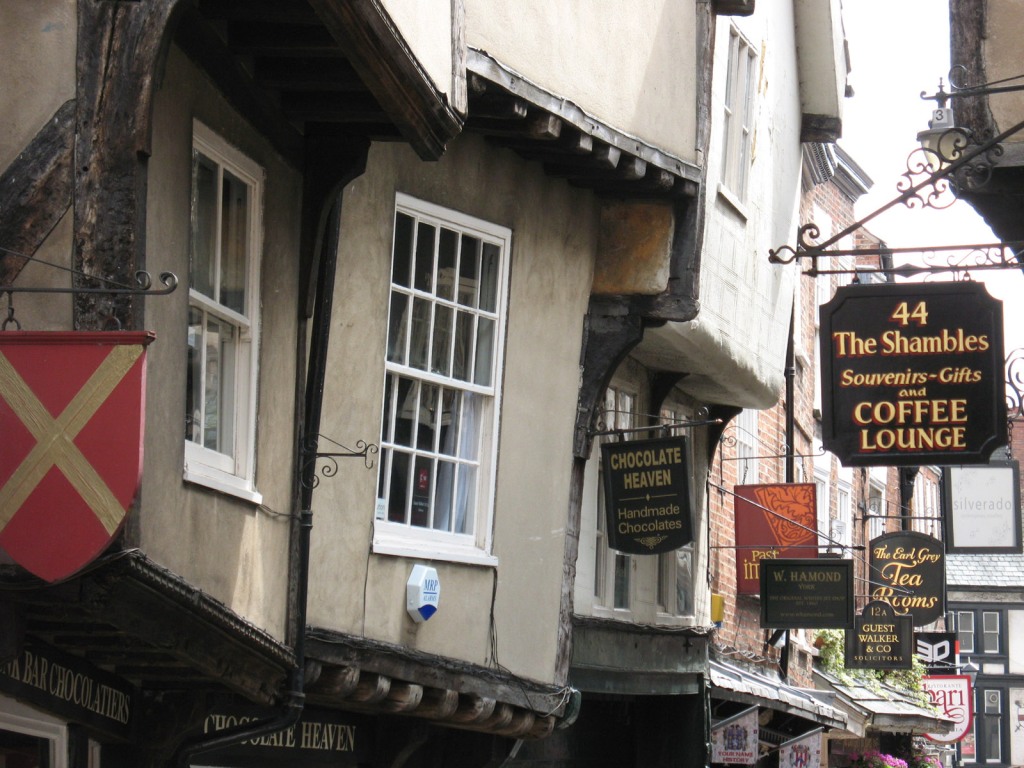
The world famous Shambles, probably York’s most interesting and picturesque street. If it wasn’t the inspiration for Diagon Alley of Harry Potter fame, then I don’t know what was.
View of the houses overhanging The Shambles and its flowing river of garishly-clad tourists during a bright autumn day.
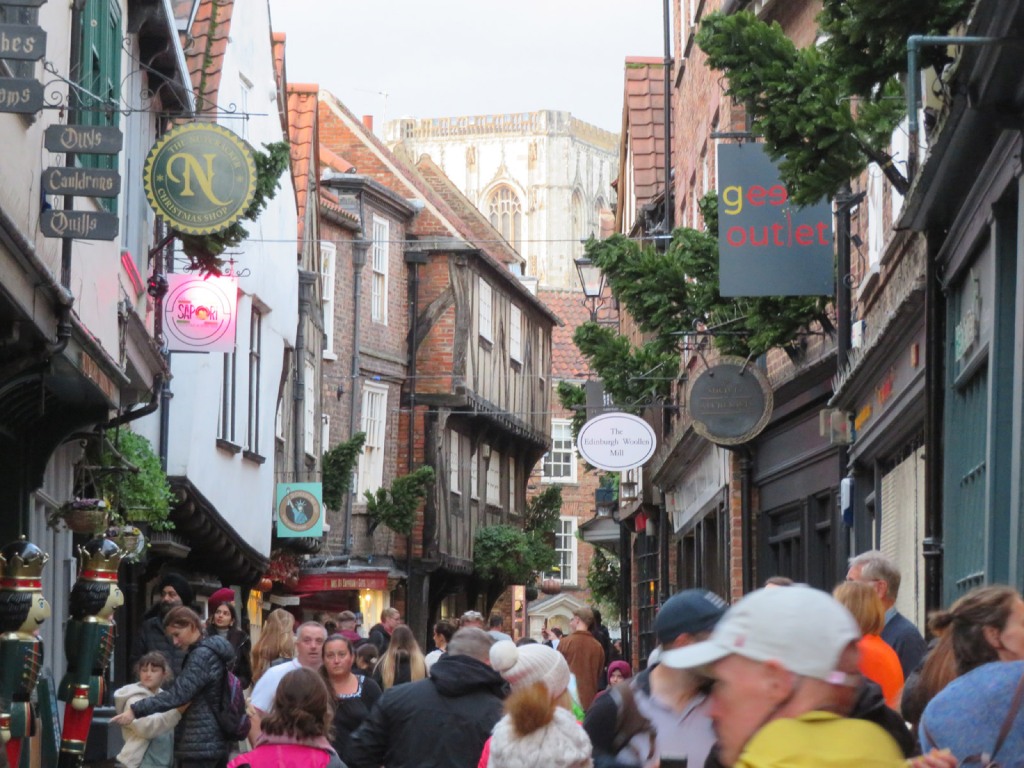
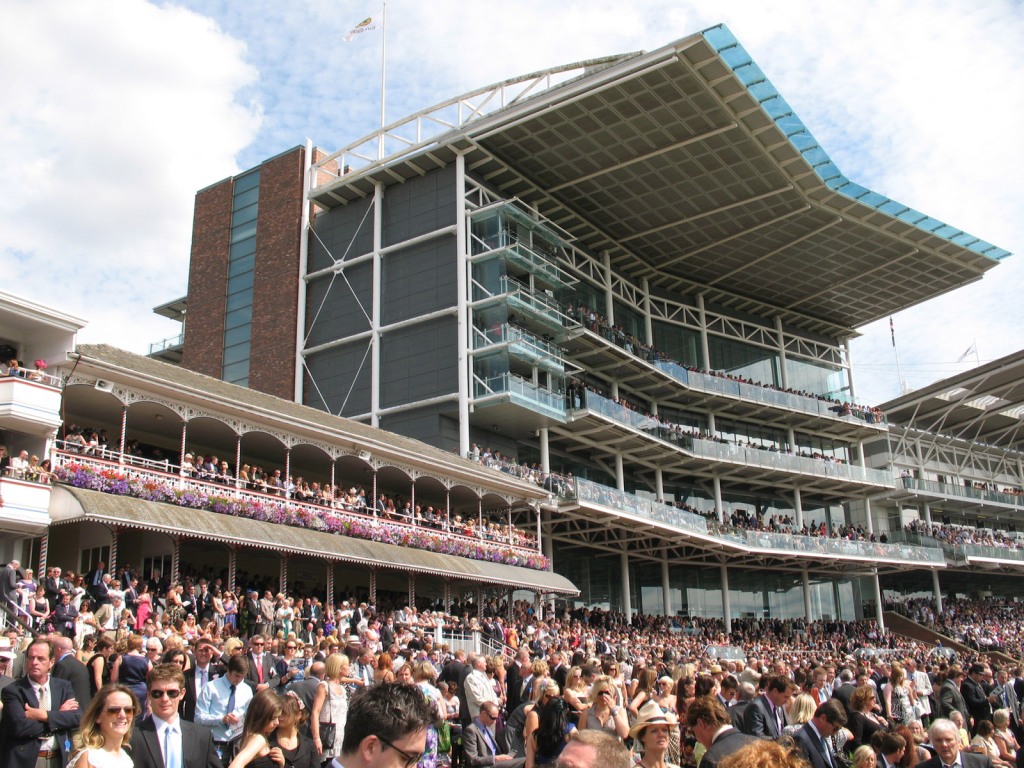
York is also well known for its race course, we went for the July 2010 racemeet. Frankie Dettori was running, but he didn’t do me any favours.
Much of the north of England was built around mining and heavy industry, and the workers lived in small terraced houses like these. It’s all very Coronation Street.


Old school advert on the side of a house near Monk Bar, for “Bile Beans” which apparently keep you healthy, bright-eyed and slim. Delicious.
Much to my surprise, the Roman Emperor Constantine made it all the way to York back in the year 306, when the city was known as Eboracum. His statue sits outside York Minster, and is footed by the words “Constantine, by this sign conquer”.
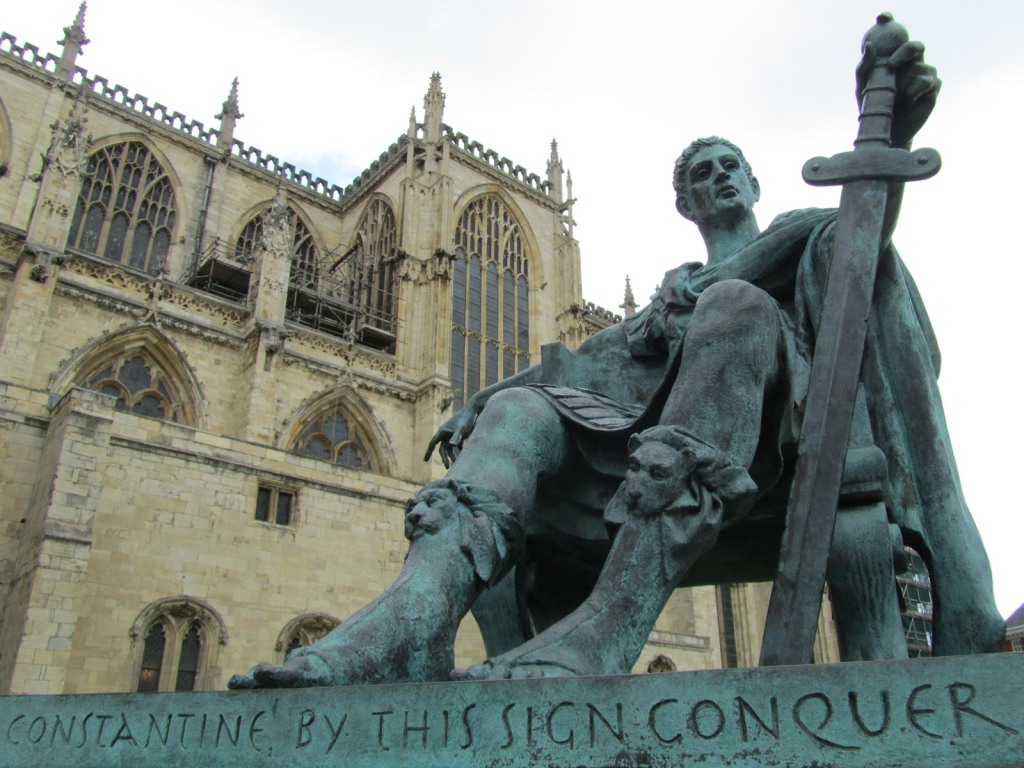

The National Railway Museum is logically right next door to the working railway station at York, one of the key stops on the East Coast Main Line. It has a great curved Victorian iron arch roof.

Created 2011 | Updated 2014, 2023
